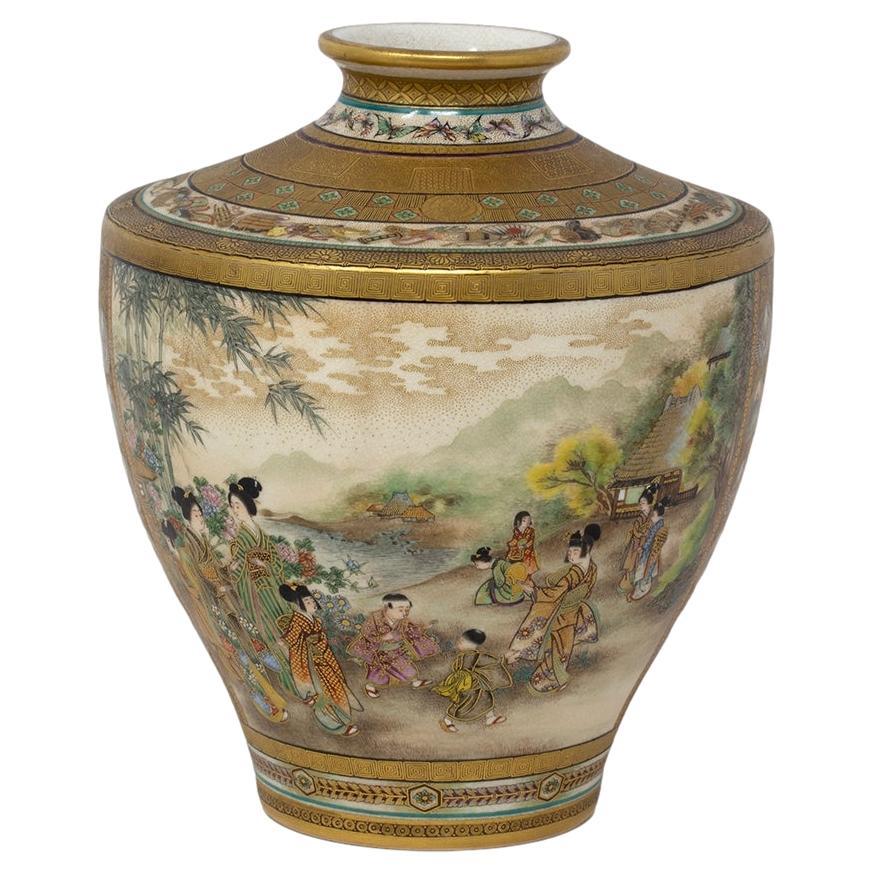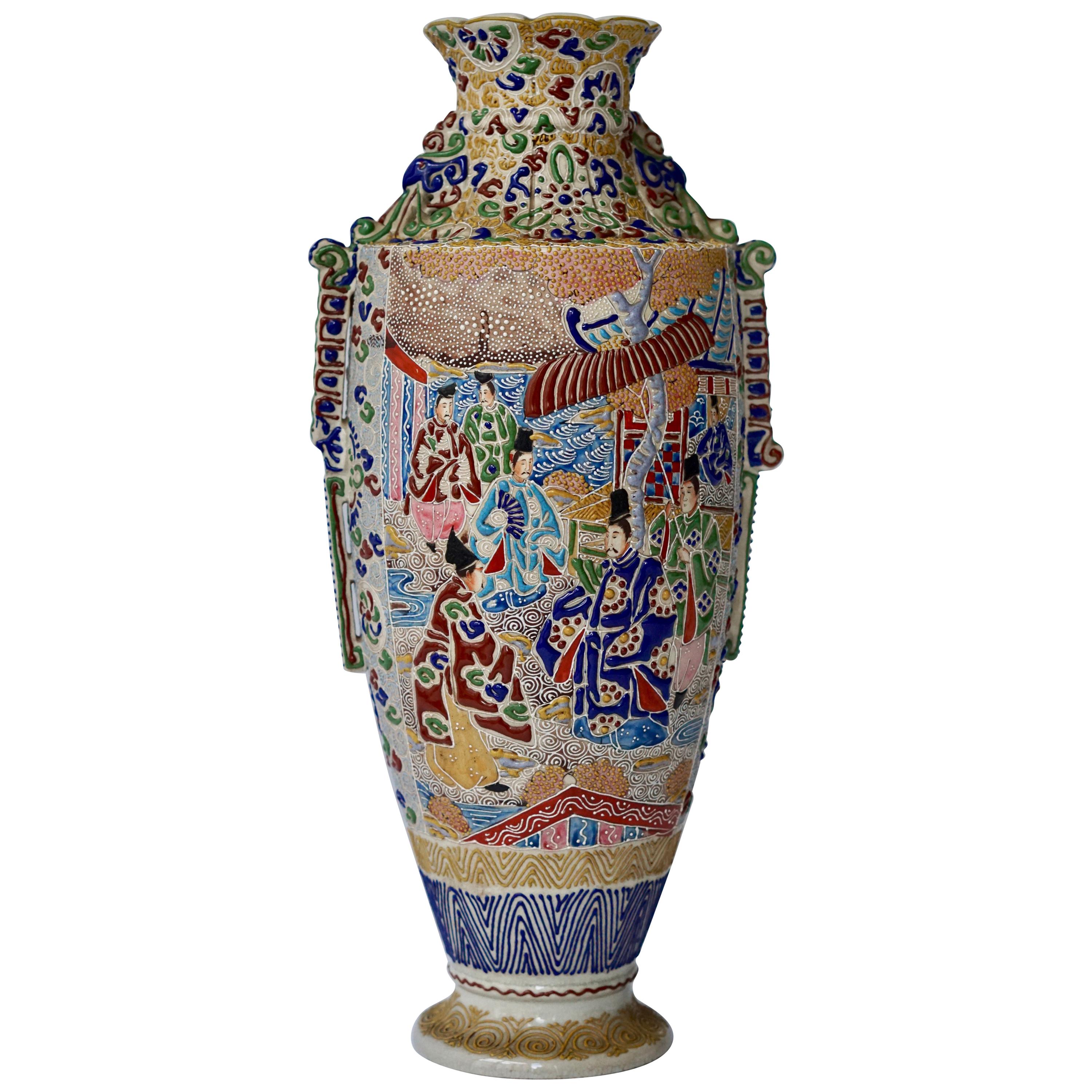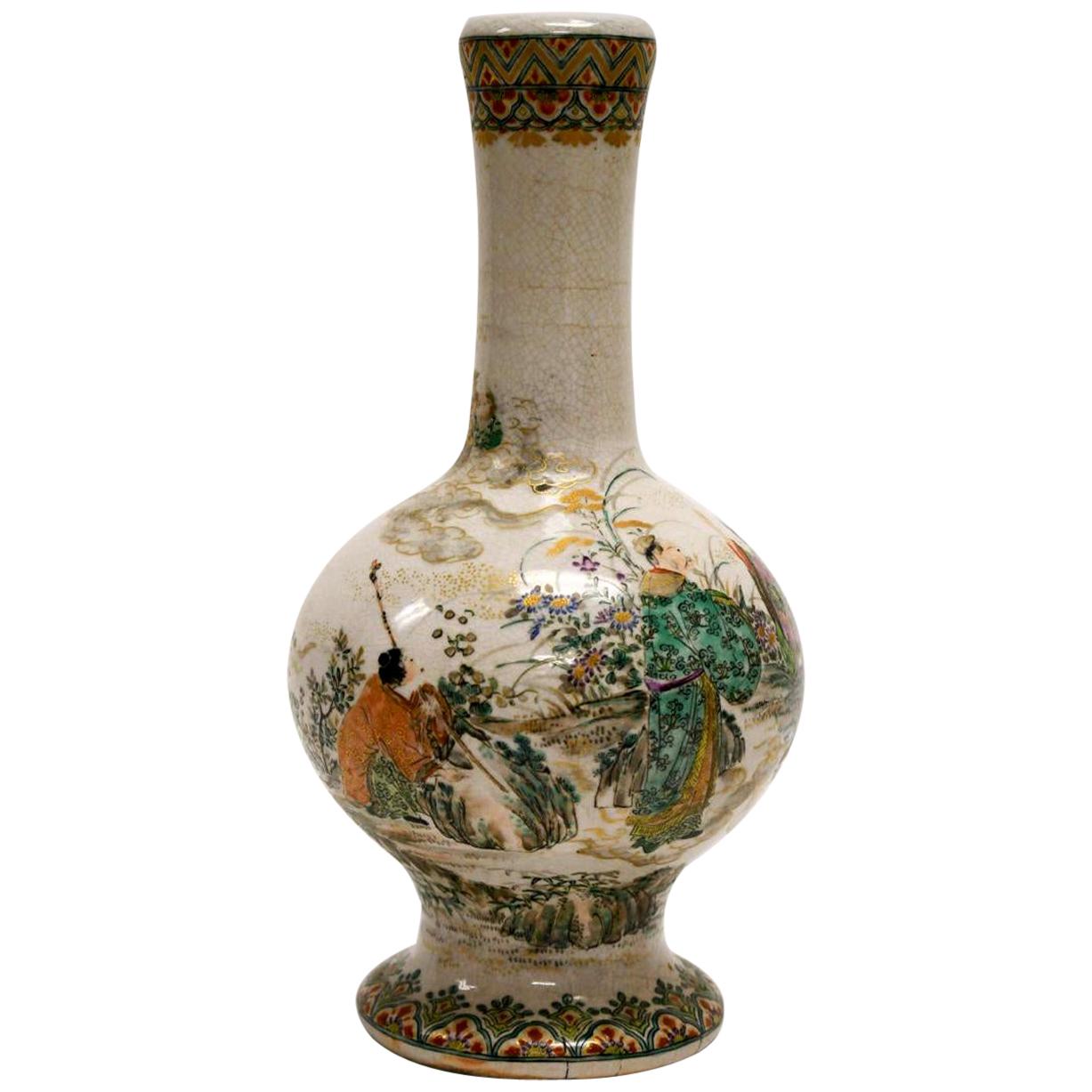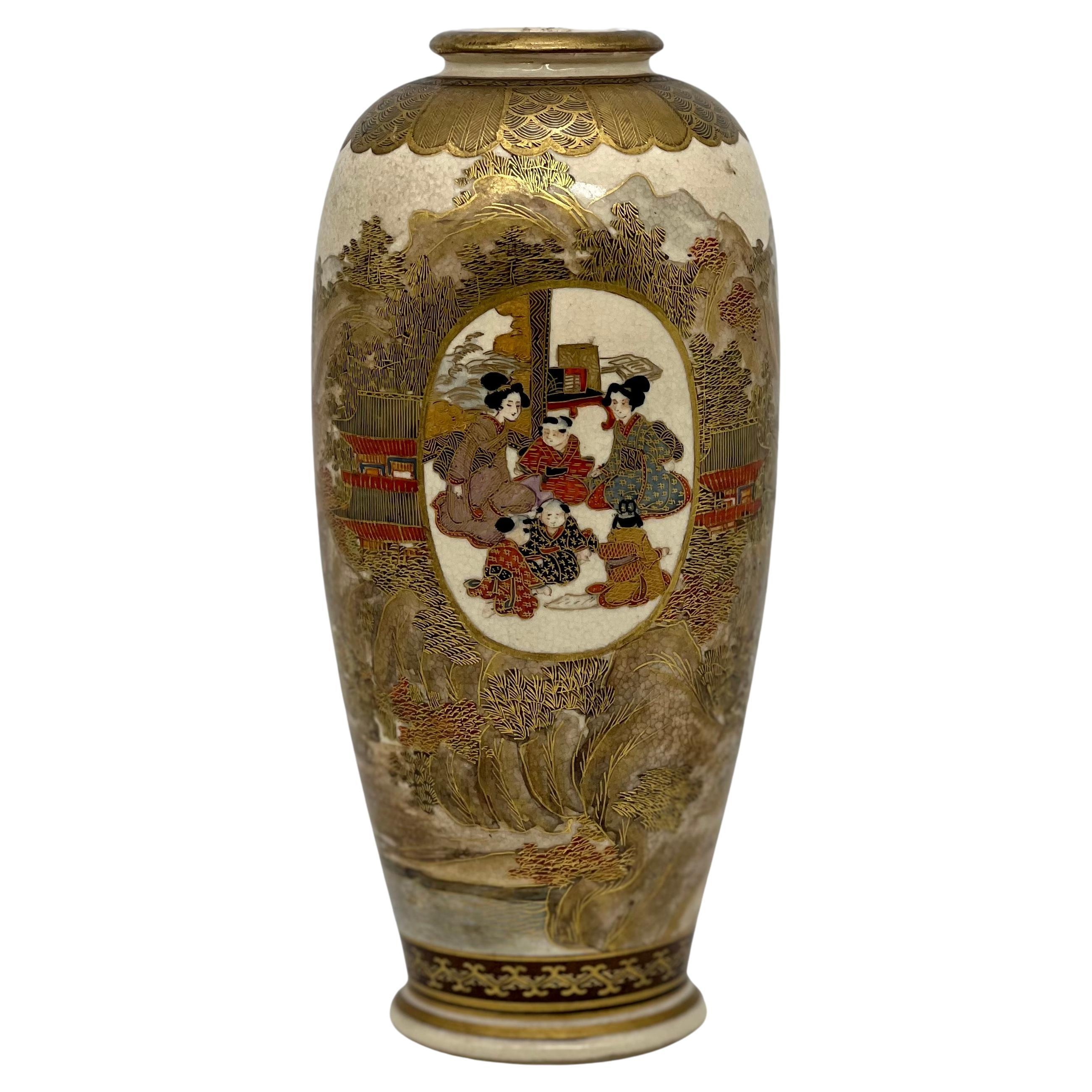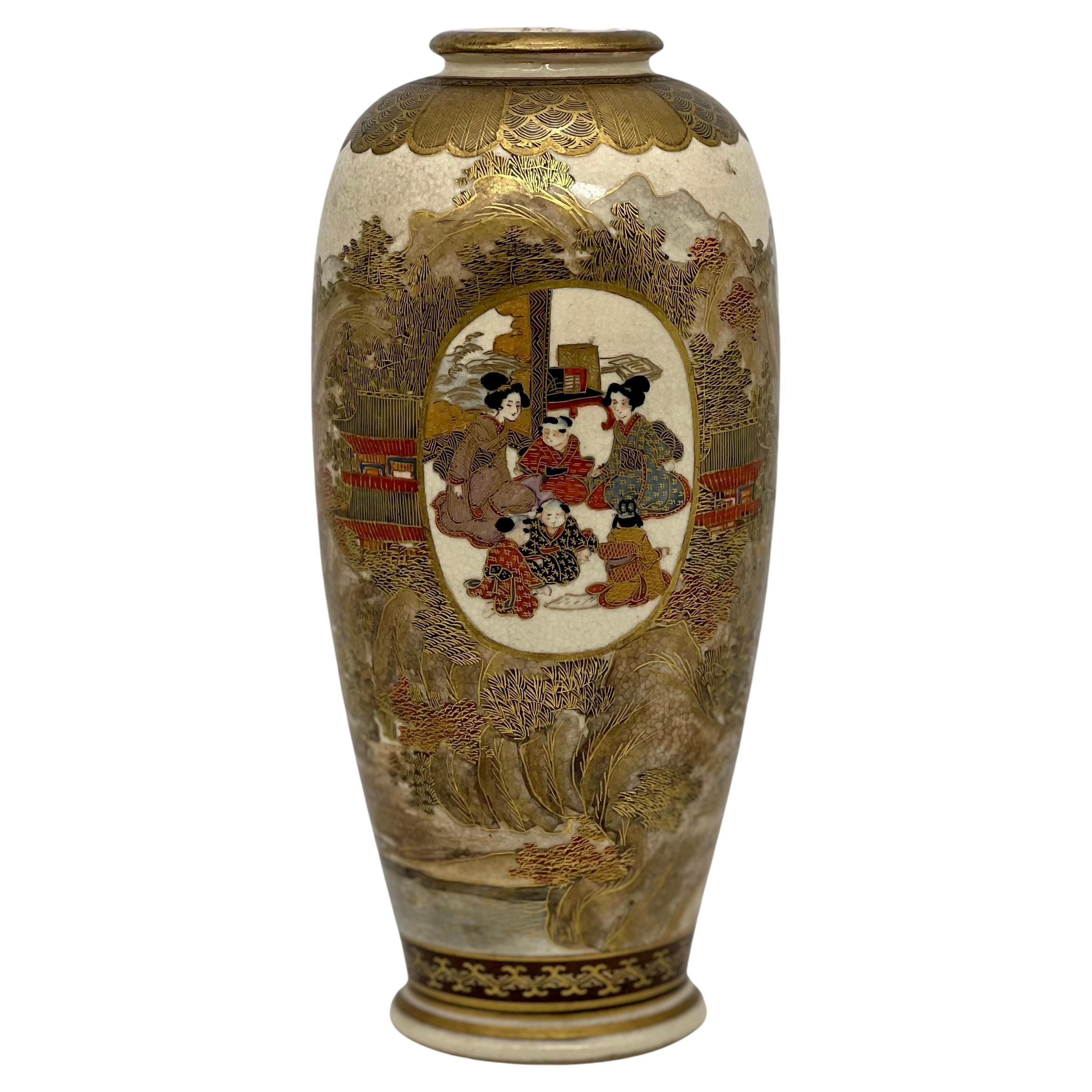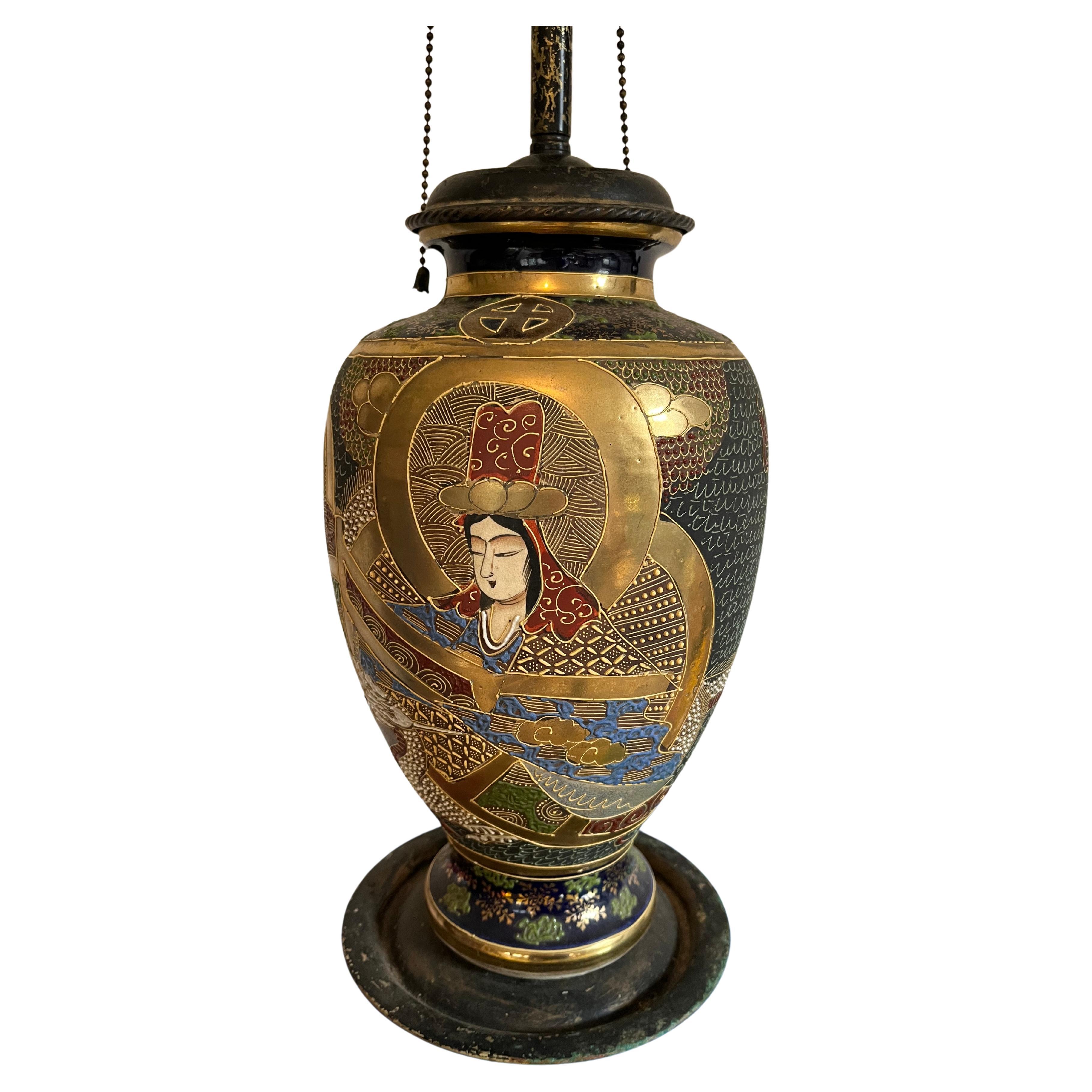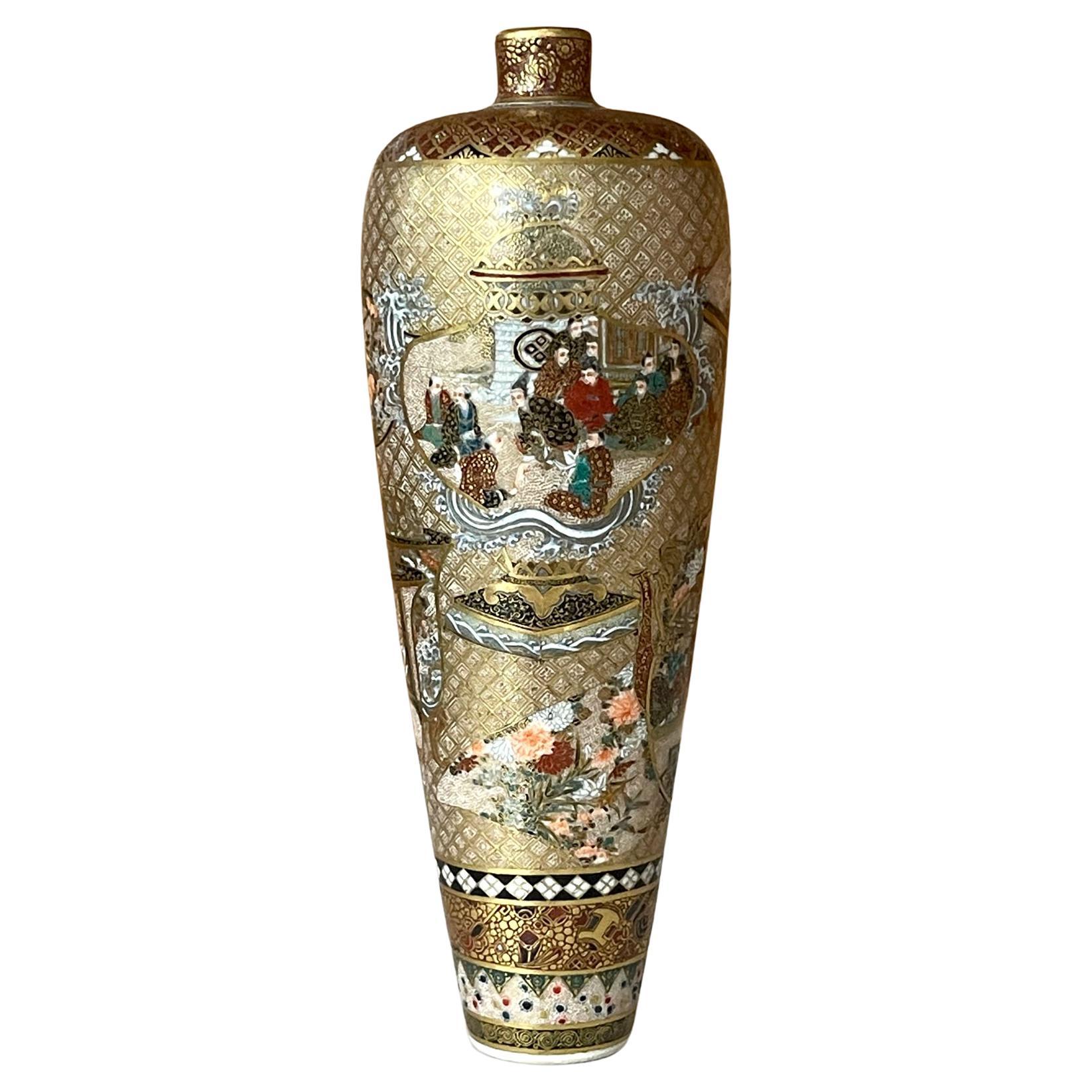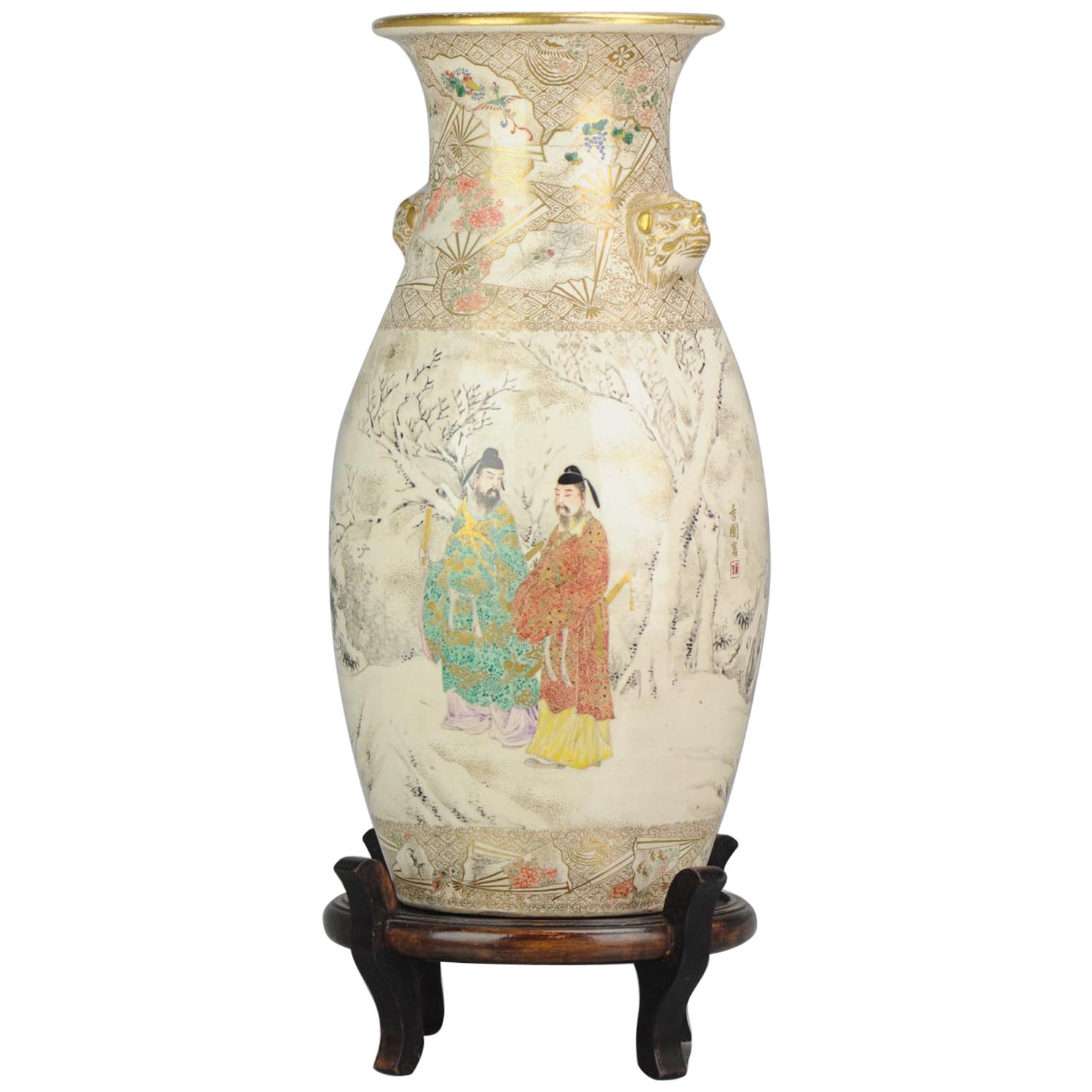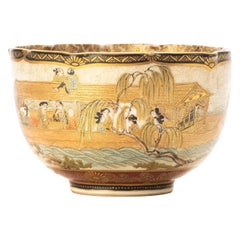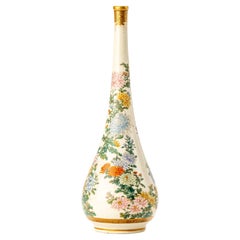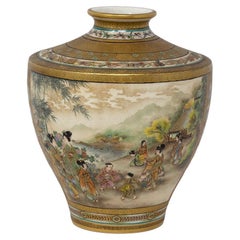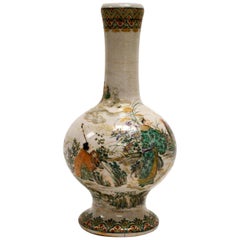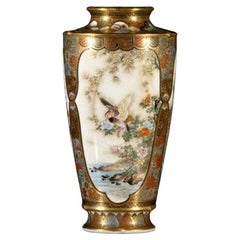
A Japanese Satsuma vase characterized by three oval reserves, signed by Ryozan
View Similar Items
Want more images or videos?
Request additional images or videos from the seller
1 of 7
A Japanese Satsuma vase characterized by three oval reserves, signed by Ryozan
About the Item
- Dimensions:Height: 7.09 in (18 cm)Diameter: 3.75 in (9.5 cm)
- Style:Japonisme (In the Style Of)
- Materials and Techniques:
- Place of Origin:
- Period:
- Date of Manufacture:Meiji period
- Condition:
- Seller Location:Milano, IT
- Reference Number:1stDibs: LU9162236275172
About the Seller
No Reviews Yet
Vetted Seller
These experienced sellers undergo a comprehensive evaluation by our team of in-house experts.
1stDibs seller since 2023
More From This SellerView All
- A Japanese Satsuma ceramic lobed bowlLocated in Milano, ITSatsuma ceramic lobed bowl with curved corners and embellished with a refined scene of daily life along a watercourse on the outside. The interior is adorne...Category
Antique Late 19th Century Japanese Japonisme Ceramics
MaterialsCeramic
- A Satsuma vase decorated with a garden of chrysanthemumsLocated in Milano, ITSatsuma vase, with slender neck and terminal part adorned in pure gold decorated with a garden of chrysanthemums, made with enamel and gold in relief. Different varieties of chrysan...Category
Antique Late 19th Century Japanese Japonisme Ceramics
MaterialsCeramic
- Satsuma ceramic lobed bowl, signed Juzan under the baseLocated in Milano, ITSatsuma ceramic lobed bowl adorned with raised enamels and fine gold details, depicting a vibrant landscape within. Characters and traditional Japanese home...Category
Antique Late 19th Century Japonisme Ceramics
MaterialsCeramic
- A Japanese Satsuma ceramic bowl adorned with relief glazes and gold detailsLocated in Milano, ITSatsuma ceramic bowl adorned with relief glazes and gold details depicting a motif of Manchurian Cranes in flight, symbols of longevity and happiness in Japanese culture. Inside, the bowl features a dense motif of a thousand butterflies...Category
Antique Late 19th Century Japanese Japonisme Ceramics
MaterialsCeramic
- A Satsuma bowl decorated with a striking landscapeLocated in Milano, ITSatsuma bowl decorated with a striking landscape that evokes the beauty and serenity of the Japanese hills, with a gently flowing river surrounded by trees and mountains. The bowl i...Category
Antique 19th Century Japanese Japonisme Ceramics
MaterialsCeramic
- Satsuma ceramic plate adorned with polychrome and gold decorationsLocated in Milano, ITSatsuma ceramic plate adorned with polychrome and gold decorations within numerous reserves of unique shape and size, depicting scenes of Japanese daily life. The plate is signed un...Category
Antique Late 19th Century Japanese Japonisme Ceramics
MaterialsCeramic
You May Also Like
- Japanese Meiji Period Satsuma Vase Painted by Ryozan for the Yasuda CompanyLocated in Newark, EnglandThe vase of slightly bulbous form potted with a tapered body reaching a slightly pinched neck and rolled top rim is beautifully decorated with two large scenes. The first scene features a mountainous region with a river flowing through the centre with beautiful wash colours of green. A Bamboo plant can be seen hanging over the left of the scene with two Geishas walking amongst the flowers with children running around them. Further Geishas can be seen to the far right of the vase in front of a traditional Japanese building. The second scene an upstream version of the first with spectacular pink cherry blossom amongst a central river breaking the land in two with further figures with children. The scenes bordered by a strip gilt border featuring alternating images two depicting a Minogame. The shoulder of the vase is beautifully finished with complex rings of geometric scrolling borders with shades of teal, butterflies and one hundred treasures style decoration above gilt cartouches of the imperial style Kiku (chrysanthemum). The vase is signed to the base Dai Nippon, Kyoto Tojiki, Goshi Kaisha, Okamoto Ryozan 京都陶, 磁器合, 資会社,岡曰本亮山 with the Yasuda Company Mark (Yasuda Kyoto Tojiki Goshikaisha) which translates as the Yoshida Kyoto Ceramic Joint Stock Company and dates to the Meiji Period (1868-1912) circa 1900. Yasuda Company was founded in 1896 by Gensei and Yoshizaburo Yasida two brothers from Kyoto. The companies full name is Yasuda Kyoto Tojiki Goshikaisha which translates to Yoshida Kyoto Ceramic Joint Stock Company. They were a manufacturer and dealership based in Kyoto and active during the second half of the Japanese Meiji-era specialising in decorative works including Cloisonne and Ceramics, today they are best-known for their Satsuma pottery wares. The company gained a good reputation and great respect for their high quality works which were executed by some of the best artists of their time. As well as Okamoto Ryozan, they worked with celebrated artists such as Sozan, Kizan, Hozan and Seikozan. Ryozan was born Nakamura Tatsunosuke and was trained by the legendary 10th generation potter Nishimura Zengoro who himself, used the artist’s name “Ryozan”. After Nishimura’s death in 1851, Nakamura Tatsunosuke adopted the name “Okatomo Ryozan” in order to pay tribute to and honour his master. Ryozan went on to become the Head Artist at the Yasuda Company of Kyoto where he confirmed his reputation as one of the great Satsuma artists of the generation. Minogame 蓑亀 are long-lived turtles with long strands of algae growing from their shells. The algae drapes down from their shells and resembles a farmer’s straw raincoat (mino) from which they get their name. They are considered very auspicious creatures throughout East Asia. The long algae on their backs is reminiscent of the long beards of sages and wise men. Because of this and their long life span, they are a symbol of long life and prosperity and appear frequently in paintings, sculpture in Japanese culture. The minogame is a symbol of longevity and happiness and has an important role in the well-known legend of Urashima Taro...Category
Antique Early 1900s Japanese Meiji Ceramics
MaterialsCeramic, Earthenware, Pottery
- Japanese Satsuma Vase with FiguresLocated in Antwerp, BEA mid-20th century Japanese Satsuma vase with figures. Satsuma ware is a style of Japanese earthenware originally from the Satsuma region of what is today southern Kyushu. There are two distinct categories of this ware: The original plain dark clay early Satsuma...Category
Mid-20th Century Japanese Japonisme Vases
MaterialsCeramic
- Early Japanese Satsuma Antique VaseBy SatsumaLocated in Atlanta, GAAn Satsuma ceramic stone ware vase, circa 19th century, around the end of the Edo and the beginning of Meiji period. In the form of a Classic garlic bottle whose prototype was from China, the white bodied piece is decorated with an early form of kin nishikide, the so called golden brocade, a palette of iron-red, blue, green, yellow, purple and black with golden highlight. The over glazed enamel paint shows a group of robed figures in a garden setting with a lion and three tigers. A transparent overall glaze shows very fine crackles. The design is relatively sparse with plenty of negative space in contrast to the Satsuma production from the late 19th century, when the trend became fussy and overly glitz, due to the influence by the perceived western taste for the export market. This piece may still be made for export but its pattern was more influenced by both Kyoto Pottery and the Kano school of painting compared to the export ware by the end of the 19th century onward to the early 20th century. It was believed by many that this was a result of Satsuma potters visiting Kyoto in the late seventeenth century to learn over glaze painting techniques. There are some age glaze crackles especially around the foot. The piece is not signed in keeping with the earlier production before Satsuma ceramics...Category
Antique Mid-19th Century Japanese Japonisme Ceramics
MaterialsCeramic
$2,850 Sale Price25% Off - Japanese Satsuma VaseLocated in Douglas Manor, NYJapanese Satsuma hand decorated vase.Category
Vintage 1920s Japanese Ceramics
MaterialsCeramic
- A Magnificent Japanese Satsuma Vase. Signed. Meiji periodLocated in London, GBA Magnificent Japanese Satsuma Vase. Signed. Meiji period. 19th C A Fine Japanese satsuma vase of a baluster form finely painted in Satsuma enamels enhanced with gold paint,decora...Category
Antique Late 19th Century Japanese Ceramics
MaterialsCeramic
- A Magnificent Japanese Satsuma Vase. Signed. Meiji period.Located in London, GBA Magnificent Japanese Satsuma Vase. Signed. Meiji period. 19th C A Fine Japanese satsuma vase of a baluster form finely painted in Satsuma enamels enhanced with gold paint,decora...Category
Antique Late 19th Century Japanese Ceramics
MaterialsCeramic
Recently Viewed
View AllMore Ways To Browse
Antique Chinese Porcelain Horse
Sang De Boeuf Ginger Jar
Chinese Porcelain Statue Chinese Ceramic Figure
Hoya Vase
Japanese Porcelain Body Cloisonne
Zhu Ming
Japanese Ceramics Bottle
Lotus Ware
Large White Chinese Pottery Horse With Ruby Colored Studs
Vintage Mudman
Ying Li
Zhongguo Zhi Zao
Shiwan Green Jar
19th C Chinese Blue And White Dish
Light Sculpure Modern
Chinese Altar Fruit
Swatow Ming
Jiajing Porcelains
